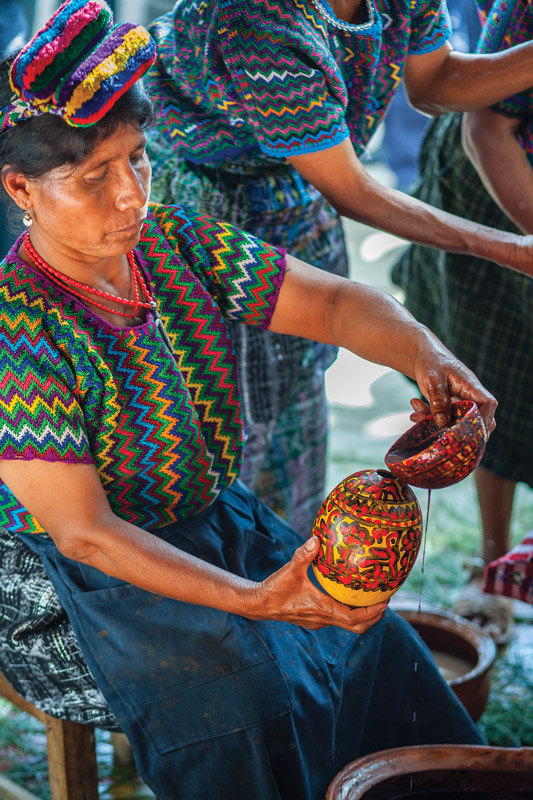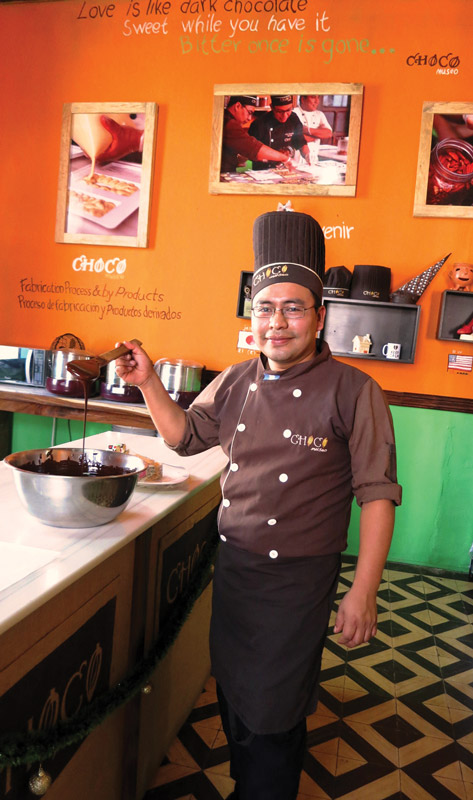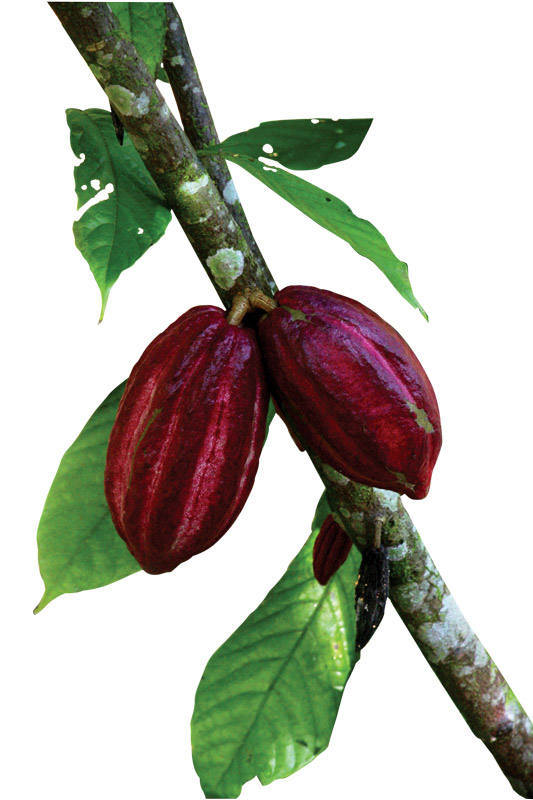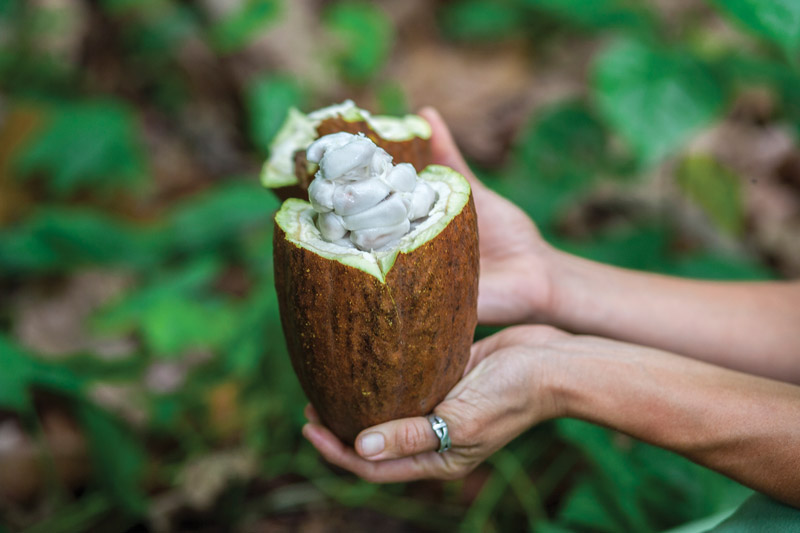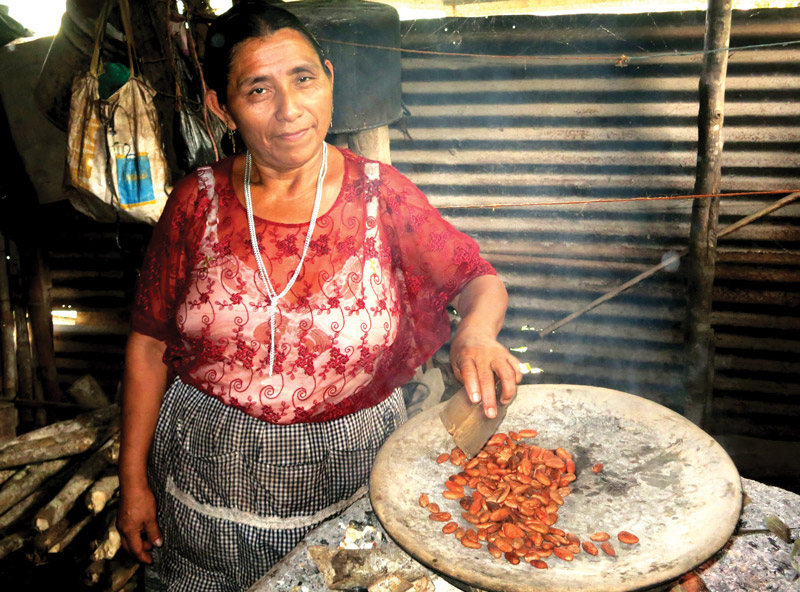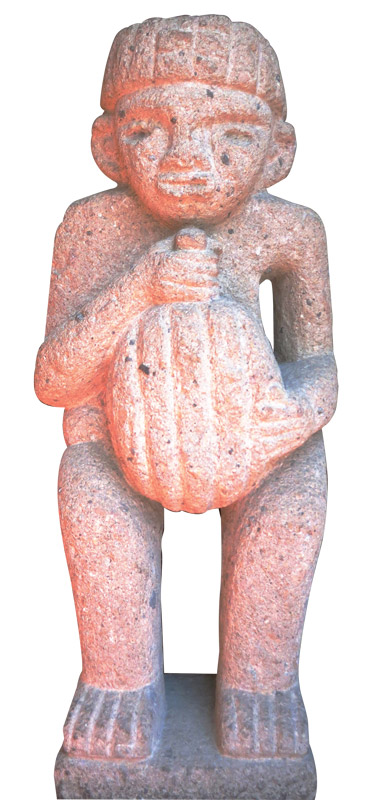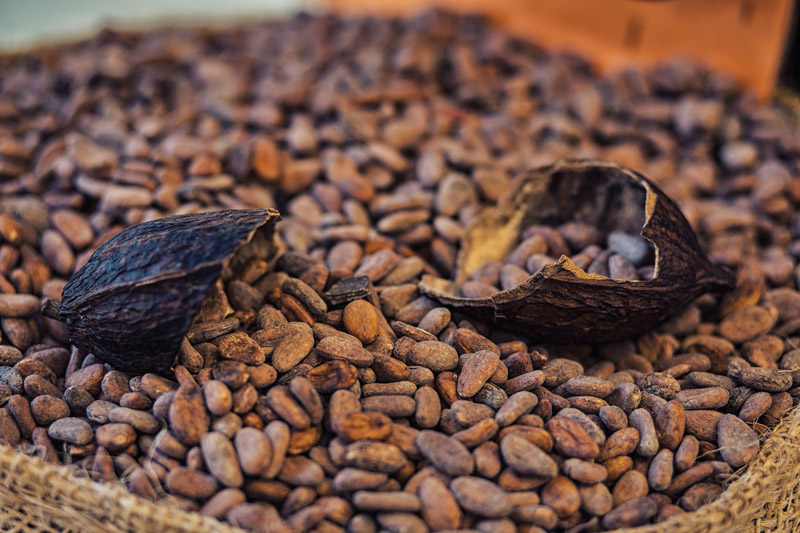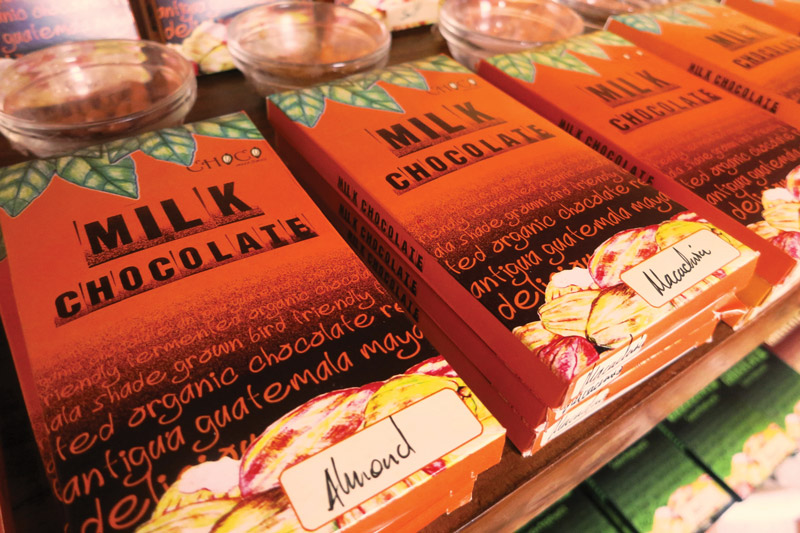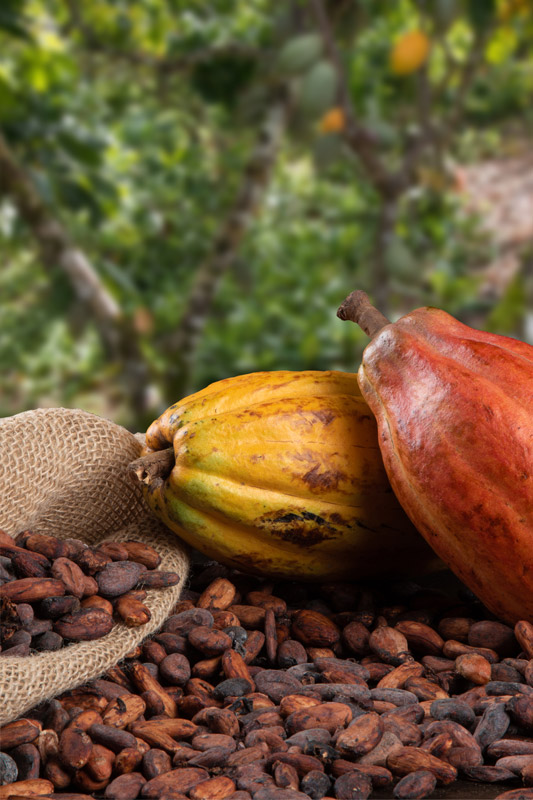Guatemala Chocolate… a Sweet Love Affair
Guatemala Chocolate… a Sweet Love Affair
by Kerstin Sabene – photos by Kerstin Sabene and Gg
For chocolate lovers, Guatemala is a sweet place to be on Valentine’s Day. This is especially true if you visit La Antigua Guatemala, where chocoholics can indulge in so many delightful ways. Luscious chocolate bars, exquisite truffles and liquor-filled bonbons are but a few of the beautiful chocolate concoctions that are available at the many artisanal sweet shops scattered throughout town.
And as if this weren’t enough to tempt a sweet tooth, Antigua boasts its own chocolate museum. In addition to producing edible cacao products, the ChocoMuseo educates the public about the entire chocolate-making process through interactive workshops, beautifully crafted exhibits and entertaining tours. If you visit the ChocoMuseo at its 4a calle oriente #8 location, it’s almost impossible not to be struck by the enormous sense of pride Guatemalans take in their country’s rich chocolate heritage and its acclaim as the birthplace of cacao.
“All of our chocolate products are hand-crafted right here on the premises,” said Carol Pérez, general manager of the ChocoMuseo. Pérez explained that the museum buys most of its high-quality cacao from Alta Verapaz in the north and from Guatemala’s Pacific coast. The cacao is then refined with state-of-the-art equipment at the museum’s location near the arch on 5a avenida. Rudy Limán, one of the museum’s cacao chefs, demonstrated how these machines help to refine the texture of the chocolate.
“The refining process, which takes many hours, is critical,” he stressed, “otherwise you will end up with chocolate that’s either too coarse or too pasty.”
The word cacao originates from the Maya word ka’kau’. The Maya revered the cacao tree because they believed that ka’kau’ was discovered by gods in a mountain. Carl Linnaeus, a Swedish botanist renowned for classifying plant life, renamed cacao, Theobroma, which translated from Latin means “food of the gods.” In ancient times, the Maya, shamans and Aztec kings all consumed cacao in beverage form and believed it to be an elixir with aphrodisiacal qualities. Cacao is also mentioned in ancient texts for its ceremonial and medicinal uses.
Even though cocoa originated in Central America thousands of years ago, its production and popularity have gone global. Some of the largest producers of cocoa in the world are now found in Africa, Asia and South America — more specifically in Ghana and the Ivory Coast, Indonesia, Peru, Ecuador and Colombia.
The main growing region for the Maya in Guatemala was originally located in what is now the department of Suchitepéquez. Today, one of Guatemala’s principle cacao-growing areas is situated even farther north in Alta Verapaz. Decades ago, Guatemala was designated as one of the world’s top producers of cacao. Sadly, this is no longer the case, as cacao wasn’t considered a cash crop like coffee and sugar cane, which slowly took over as more marketable exports.
On a beautiful morning in late December, I set out in a pickup truck from Cobán in the department of Alta Verapaz with Jorge Caceros, manager of quality control for FEDECOVERA, a federation of cooperatives that provides technical assistance and marketing services to cacao-growing communities in and around the municipalities of Baja and Alta Verapaz. We were headed to one of many local parcelas or smaller cacao farms in the vicinity.
The majority of the population in this region is indigenous and the Maya language spoken is Kekchi. Alta Verapaz is also renowned for its “chipi chipi,” a term used to describe the phenomena of fine drizzle that falls throughout the day in the tropics of Guatemala and Mexico.
“Cacao trees require hot, rainy and tropical environments, within 15 degrees latitude north or south of the equator,” stated Caceros. “Cacao also grows best when there are other crops with lush vegetation to provide shade for its trees.”
As we strolled through the parcela, I was struck by the abundance of flourishing and fragrant cardamom and allspice plants that provided the cocoa trees and their precious pods with protective cover.
Caceros noted that although the weather was unusually warm for this time of year and climate change appears to be affecting crops with a likely reduction in product for the first time in 2016, cacao has seen a resurgence in this area in the last couple of years. Because FEDECOVERA supports and empowers small farmers, encouraging them to cultivate one of the finest cacao products in the region, so many more of the local producers have additional income now to invest in more land and trees. These smaller investors are being mentored to produce for a larger market.
Three types of cacao trees grow in Guatemala: criollo, forestera and trinitario. Classified as “fine grade,” criollo is the oldest known and rarest variety because it produces the least amount of seeds. According to Gg, owner and creator of Cacao Junajpu, one of several artisanal chocolate makers in and around Antigua, criollo cacao is the direct descendent of the first cocoa trees domesticated by the Maya over 3,000 years ago. The chocolate derived from this variety is of the highest quality, classified as one of the finest flavored chocolates with no trace of bitterness. She went on to explain that many cacao farmers grow trees that produce lower quality chocolate because they are more resilient to disease and therefore more likely to guarantee a good harvest. Fine cocoa accounts for less than 5 percent of world cocoa production because these trees are susceptible to disease and produce lower yields than other strains of the cocoa tree.
Gg, who came to Guatemala to study with the Maya people, has been producing her exquisite artisanal drinking chocolate for nine years now. “I really wanted to learn how to make ancient Mayan cacao the way it used to be,” she stated. “All of the knowledge is passed down orally, so I moved around and talked to Mayan priests and locals in many Guatemalan communities before starting to experiment with different ingredients.”
What sets fine chocolate apart from much of that produced for the mass market is the fermentation process. Unless the beans are first fermented, the full flavor of the chocolate is simply not there. To make chocolate properly, cacao beans and their pulp are fermented before being dried and roasted. From there, the husks are removed and the nibs are ground and refined. About half of the cacao produced in Guatemala is fermented. All eating chocolate is made with fermented cacao, however the majority of cacao consumed in Guatemala is drunk, not eaten.
Although the quantity of cacao produced here has decreased compared to other countries, Guatemala’s chocolate is some of the best in the world and is earning a well-deserved reputation for its high grade and quality.
There are many talented artisanal chocolate makers in Guatemala. If you have the time to explore, the names and websites of some of them with product description, location and history are listed here.
Artisanal Chocolate Makers in Guatemala
For more information about the ChocoMuseo, its workshops, world-wide locations and a list of all of its edible as well as cacao-inspired beauty products, go to :
www.ChocoMuseo.com.
To learn about FEDECOVERA’s products, history and inspiring contributions to women’s empowerment, health, education, reforestation and organic production, go to:
www.Fedecovera.com
